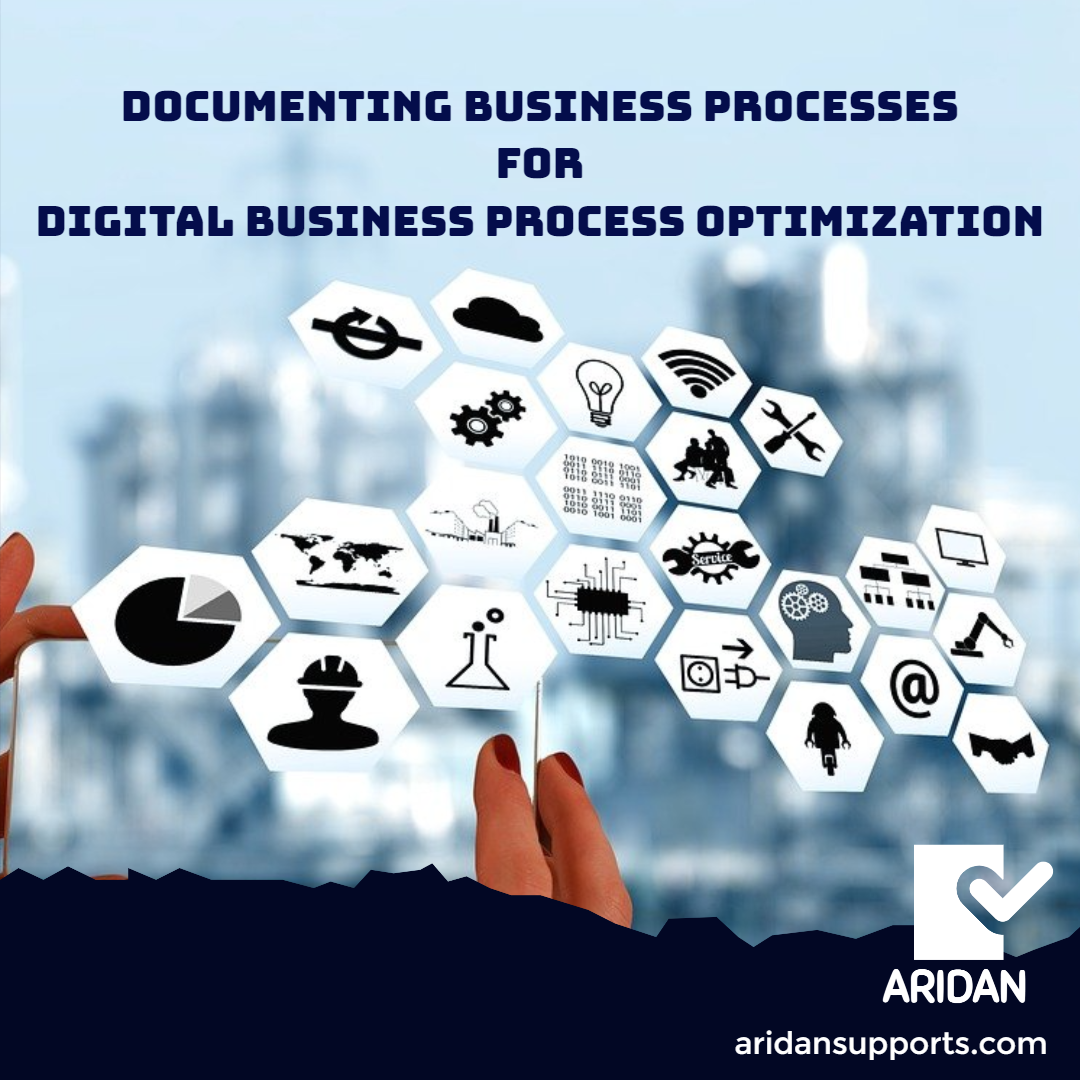In the quest for increased efficiency, cost-effectiveness, and overall operational excellence, businesses often find themselves at the crossroads of traditional methods and digital transformation.
A very important initial step in the journey of digital transformation is the meticulous documentation of current business processes. This foundational task not only provides a comprehensive understanding of existing workflows but also serves as the blueprint for successful digital business process optimization. It is one of the steps in digital business process optimization.
THE IMPORTANCE OF PROCESS DOCUMENTATION
Process documentation plays an important role in the organizational landscape, serving as the foundation upon which efficient and effective operations are built. One of its primary importance lies in providing clarity and transparency regarding the intricacies of workflows.
By meticulously documenting each step of a process, businesses gain a comprehensive understanding of their operational landscape, enabling them to identify inefficiencies, facilitate collaboration, and allocate resources strategically to address future issues.
In summary, process documentation provides clarity and transparency, facilitates the identification of inefficiencies which encourages risk assessment and evaluation, and facilitates collaboration:
PROVIDING CLARITY AND TRANSPARENCY
- Visualizing Workflows: Documenting current processes involves mapping out each step of a workflow, shedding light on the intricacies of day-to-day operations.
- Identifying Dependencies: The process documentation reveals interdependencies between different tasks and departments, fostering a holistic understanding of the organization’s operations.
IDENTIFYING INEFFICIENCIES
- Pinpointing Bottlenecks: By documenting processes, organizations can identify bottlenecks, delays, and redundancies that might be impeding efficiency.
- Analyzing Resource Allocation: A clear overview of current processes aids in evaluating how resources, including time and manpower, are currently allocated.
FACILITATING COLLABORATION
- Cross-functional understanding: Process documentation encourages collaboration by providing a shared understanding of how different departments contribute to overarching business goals.
- Communication Improvement: Clear documentation aids team communication, minimizing misunderstandings and enhancing overall cooperation.
PERFORMING RISK ASSESSMENT
- Identifying Risks: Documenting processes helps identify potential risks and points of failure, allowing organizations to proactively address issues before they escalate.
- Compliance Evaluation: Organizations can ensure that documented processes align with regulatory requirements and industry standards.
THE OUTDATED OR NON-EXISTING DOCUMENTATION
The absence or outdated status of documentation for business processes poses significant challenges that can impede an organization’s efficiency and growth. Without comprehensive and up-to-date documentation, businesses face the risk of operational ambiguity and loss of institutional knowledge.
Outdated documentation can mislead employees into following obsolete procedures, leading to errors, delays, and suboptimal performance. In the absence of documentation altogether, the organization is left vulnerable to disruptions due to the lack of standardized processes, hindering the ability to scale, replicate successes, or navigate unforeseen challenges.
Furthermore, the absence of clear process documentation complicates the onboarding of new employees, as they lack a structured guide to understand workflows and organizational protocols.
Overall, the challenges stemming from outdated or non-existent documentation underscore the importance of maintaining an accurate and current record of business processes to ensure organizational resilience and sustained success.
STEPS FOR DOCUMENTING BUSINESS PROCESSES
It should be common practice to have business processes outlined. These are some of the well-known steps for documenting business processes:
INVENTORY CREATION
- List All Processes: Identify and list every process within the organization, ranging from core business functions to support activities.
- Categorization: Categorize processes based on their significance, frequency, and impact on overall operations.
DETAILED PROCESS MAPPING
- Flowcharts and Diagrams: Utilize flowcharts and process diagrams to visually represent each step of a process.
- Input and Output Identification: Document the inputs, outputs, and dependencies for each process step.
STAKEHOLDER INVOLVEMENT
- Cross-Functional Teams: Involve representatives from various departments to ensure a comprehensive and accurate depiction of processes.
- Feedback Loop: Establish a feedback loop to incorporate insights and perspectives from employees who are directly involved in day-to-day operations.
DOCUMENTATION STANDARDIZATION
- Consistent Format: Standardize the documentation format to ensure clarity and ease of understanding across the organization.
- Version Control: Implement version control mechanisms to keep documentation up-to-date as processes evolve.

SETTING THE STAGE FOR DIGITAL OPTIMIZATION
The digital optimization process consists of first setting up clear goals, analyzing the current processes, designing the digital process optimization, testing the optimized process, implementing the digital process optimization, and evaluating and continuously improving/optimizing the process.
While going digital is heavily promoted, some components must be addressed to prevent future issues:
TECHNOLOGY ALIGNMENT
- Assess Current Technology Stack: Evaluate existing technology infrastructure and identify gaps or areas where digital solutions could enhance efficiency.
- Scalability Considerations: Ensure that selected digital solutions align with the organization’s long-term scalability goals.
EMPLOYEE TRAINING AND CHANGE MANAGEMENT
- Change Management Plan: Develop a change management plan to address potential resistance and ensure a smooth transition.
-
-
- Prepare the Workforce: Communicate the intent behind digital transformation to employees and provide training on new tools and processes.
- Employee Training: Employees may resist adopting new digital tools, requiring comprehensive training programs to ensure a smooth transition.
-
- Cultural Shift: Shifting from a paper-centric to a digital culture may face resistance from those accustomed to traditional processes.
INITIAL INVESTMENT AND INTEGRATION
- Cost of Technology: Implementing digital solutions involves an initial investment in hardware, software, and training.
- Integration Challenges: Migrating existing paper-based processes to digital platforms may pose integration challenges and potential disruptions.
SECURITY CONCERNS
- Digital processes bring about concerns regarding data security and the potential for cyber-attacks. Robust cybersecurity measures must be in place to safeguard sensitive information and prevent Data breaches.
TECHNICAL ISSUES
- Technical issues, such as system downtimes and glitches, may impede regular business operations, necessitating prompt resolution.
LEGACY SYSTEMS COMPATIBILITY
- Businesses with legacy systems may face challenges integrating new digital solutions with existing infrastructure, requiring careful planning and potentially phased implementation.
CONTINUITY CONCERNS
- Digital processes bring about concerns about continuity if there is no plan to effectively handle everyday cybersecurity issues. A business continuity plan should be in place to address the ongoing concern of digital systems.
FINAL THOUGHTS
The process of documenting current workflows lays the groundwork for successful digital business process optimization. By gaining clarity on existing processes, organizations can identify areas for improvement, enhance collaboration, and set the stage for the integration of digital solutions.
This methodical approach ensures that the subsequent transition to digital processes is not only efficient but also aligned with the unique needs and objectives of the organization. Embracing the opportunities presented through process documentation is the key to unlocking the full potential of digital business process optimization.
Sources
Bukht, R. and Heeks, R. 2017. Defining, Conceptualising and Measuring the Digital Economy. Development Informatics Working Paper no. 68. Accessed January 8, 2024.
Damelio, L. 2011. The Basics of Process Mapping. Routledge; 2nd edition.
Franz, P. and Kirchmer, M. 2013. Value-Driven Business Process Management: The Value-Switch for Lasting Competitive Advantage. McGraw Hill; 1st edition.
KPMG. 2020. Maximising Productivity with Lean Six Sigma. Accessed January 8, 2024.
Linde. L, Sjödin. D, Parida. V., and Gebauer. H. 2021. Evaluation of Digital Business Model Opportunities: A Framework for Avoiding Digitalization Traps. Journal Research-Technology Management Volume 64, 2021 – Issue 1. Accessed January 8, 2024.
SixSigma.nl. Procesoptimalisatie: Wat is het en hoe doe je dat? Accessed January 8, 2024.
Vaz. N, 2021, Digital Business Transformation: How Established Companies Sustain Competitive Advantage From Now to Next, Wiley; 1st edition.









